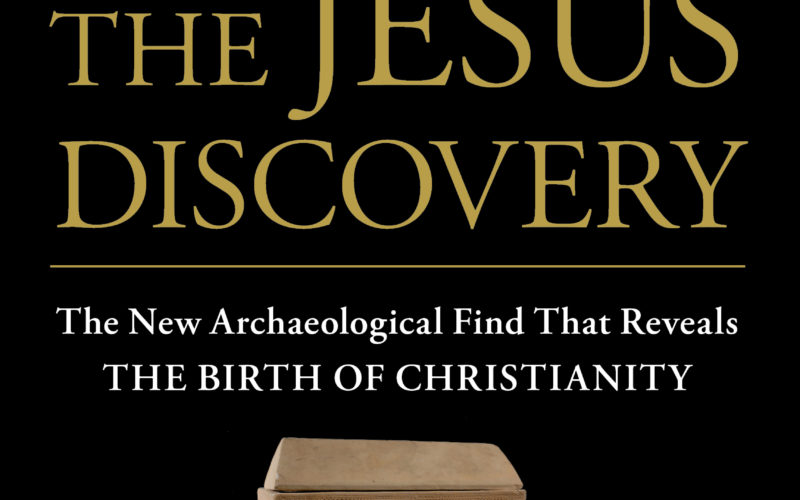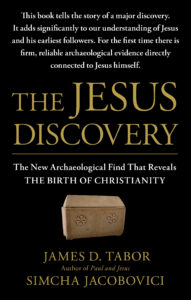The Jesus Discovery–Read the Book!
As posted by James Tabor on jamestabor.com
On the morning of Tuesday, June 29, 2010 an unprecedented archaeological discovery related to Jesus and early Christianity was made outside the Old City of Jerusalem. It adds significantly to our understanding of Jesus, his earliest followers, and the birth of Christianity. In this book we reveal for the first time reliable archaeological evidence that is likely connected to Jesus’ first followers. This discovery provides the earliest archaeological evidence of faith in Jesus’ resurrection from the dead, the first witness to a saying of Jesus that predates even the writing of our New Testament gospels, and the earliest example of Christian art—all found in a sealed tomb dated to the 1st century CE. Significantly, this tomb, located less than 200 feet away from the Talpiot “Jesus” family tomb, on the same ancient estate, increases the likelihood that the final resting place of Jesus of Nazareth, his family, and some of his loyal followers have been discovered.
The Jesus Discovery: The New Archaeological Find that Reveals the Birth of Christianity (Simon & Schuster, 2011) is out in paperback today with an attractive new cover. This book, which I co-authored with Simcha Jacobovici, is not just about the new discoveries we made in 2010 with a robotic camera–namely the “Jonah” image and the Greek inscription–that became the subject of so much controversy when the book was first released a year ago. It is a comprehensive examination of both the Talpiot tombs and all the implications related thereto, including the earliest Christian view of Jesus’ resurrection, what we know about Mary Magdalene, and how the ossuary inscribed “James son of Joseph, brother of Jesus” likely relates to the whole. It also includes, published for the first time, the results of the latest DNA tests done at the University of California Davis on the bone fragments found in the “Jesus son of Joseph” and “Mariamene” ossuaries. It examines all the major questions and controversies related to the “Jesus family tomb” and addresses all the major objections, including the assertions that the “names in the Jesus tomb are common,” and it is unlikely that Jesus was married or had children.
When this book was initially released on February 28, 2011 it stirred great controversy in the academic community. The American Schools of Oriental Research (ASOR) devoted the month of March to a discussion of the new findings and our interpretations of the “Jonah” image and the Greek inscription and dozens of bloggers chimed in, mostly with objections to our interpretations. The new discoveries were covered by major print and television media worldwide, including a front page story in Israel’s preeminent newspaper, HaArtez, and features on CNN and CBS’s Nightline. It was subsequently featured on the covers of Popular Archaeology magazine and the Israeli magazine Eretz. There is an archive of the major print media here and television and radio here.
If you heard about the controversy but never read the book now is the time. The paperback is reasonably priced and it is also available in Kindle and Audio formats–masterfully ready by Jason Culp. See the various links for on-line purchases here.
Now that the dust has settled there is much to be said. Did we indeed find the earliest image of the “sign of Jonah,” associated with faith in Jesus’ resurrection? Does the four-line Greek inscription say something about God raising up the dead? Two scholars who presented papers at the annual meeting of the Society of Biblical Literature last November in support of our “Jonah” interpretation have articles coming out soon. I also gave a paper that was well received in the SBL “Ancient Near Eastern Iconography and the Bible” section at the same annual meeting. There is a special session devoted to The Jesus Discoveryat the upcoming Southeast regional ASOR meeting in Greenville, SC, March 15-17, in which I will present our case, including my response to Chris Rollston’s interpretation of the Greek inscription, with responses by Chris Rollston and Mark Goodacre. See the SECOR website for program and details.
Over the next few blog posts I plan to highlight some of the main areas of controversy and how things have changed in the discussion over the past year. In the meantime I invite my blog readers to “Read the Book!”


